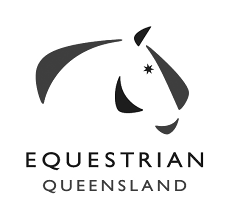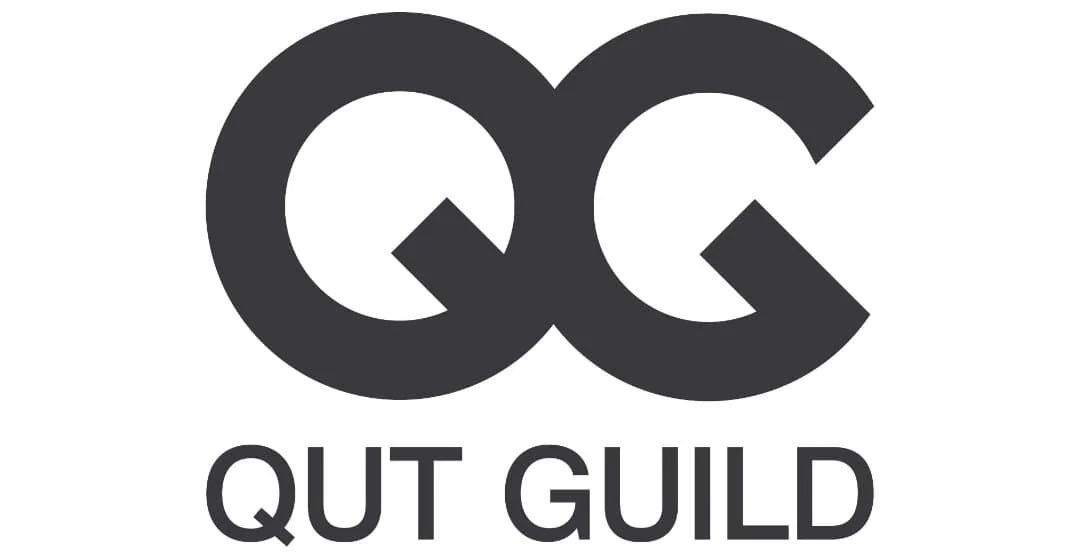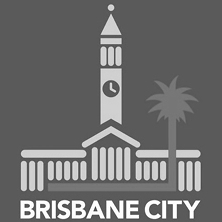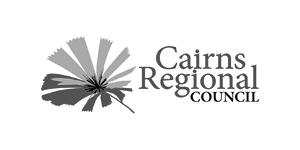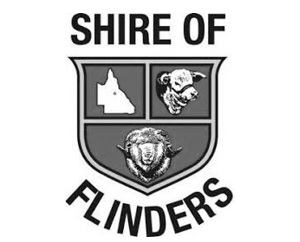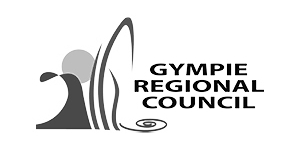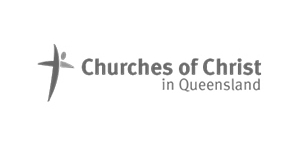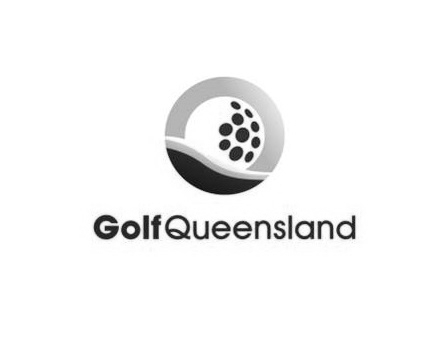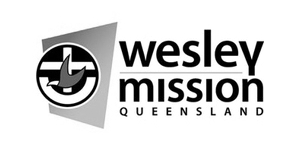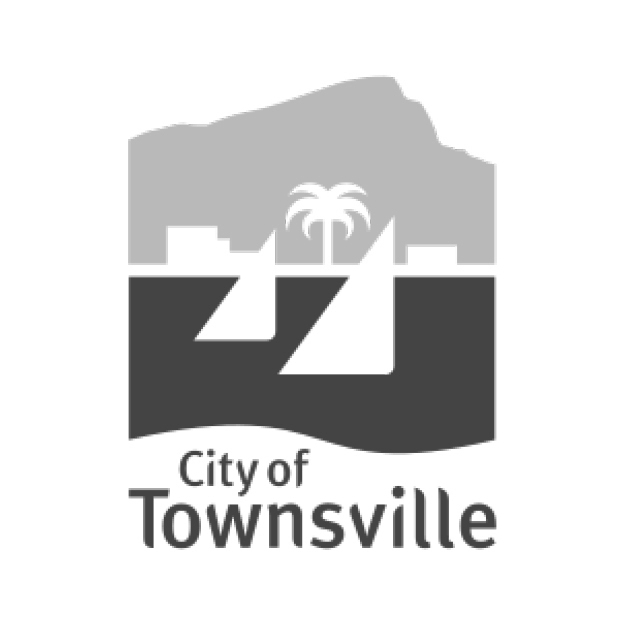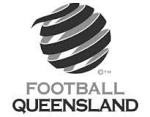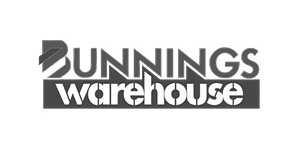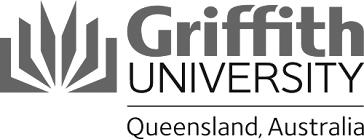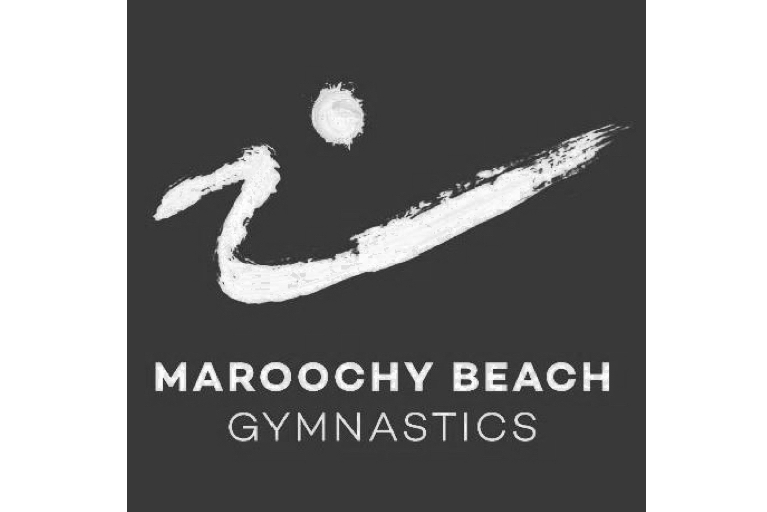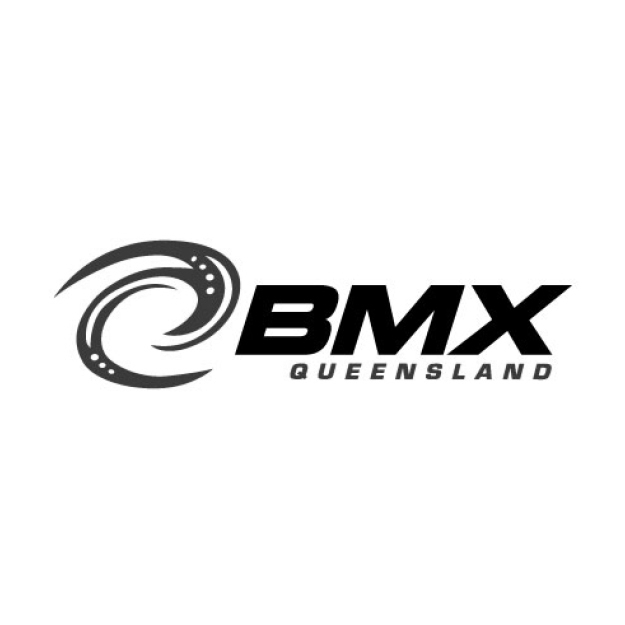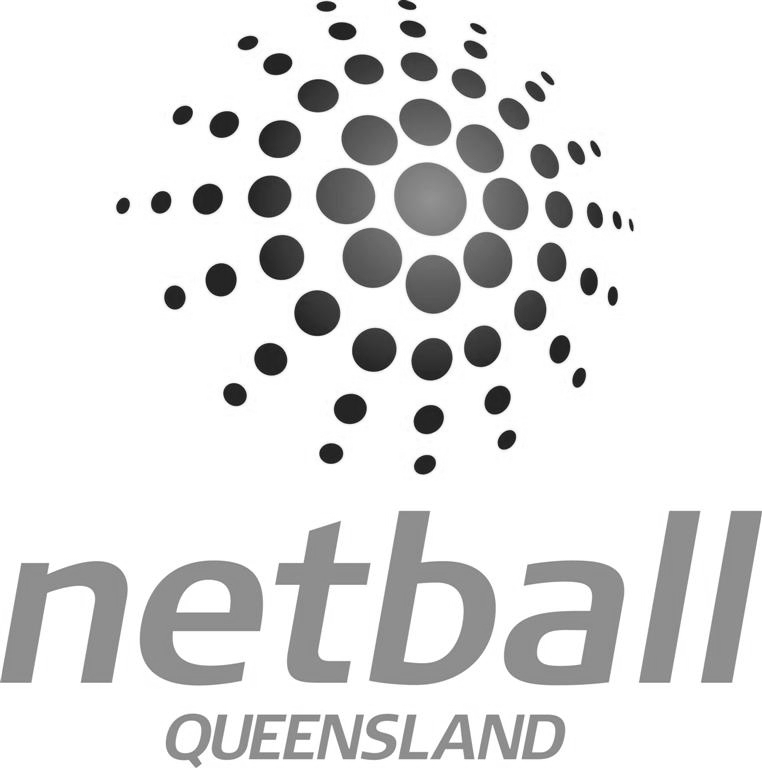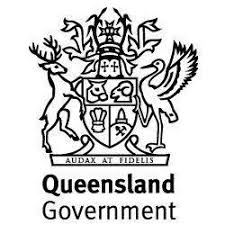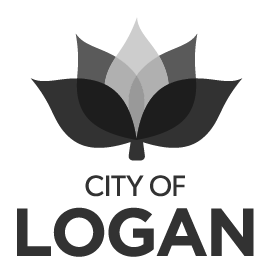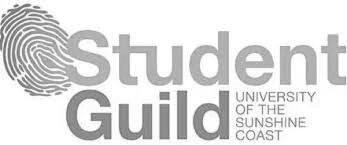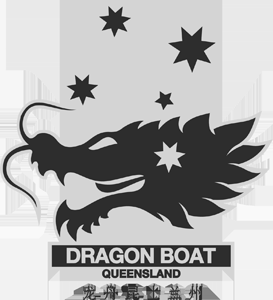Volunteers are the lifeblood of sports clubs, playing essential roles in everything from coaching and organising events to managing facilities and ensuring player well-being. They need to be nurtured and appreciated; if they aren’t, they can lose interest and enthusiasm. With this suggested approach, your club will reap the benefits of a dedicated, skilled, and passionate volunteer team that feels appreciated and ready to contribute for the long term.
Helping Communities Secure the Funding They Need to Grow and Improve
Securing funding for community projects is no small task. The process involves navigating complex requirements, aligning projects with strategic priorities and ensuring that applications stand out among countless others. For Councils, clubs and community organisations, a well-planned approach to funding can unlock opportunities to grow, improve and create lasting impact. Learn how CPR Group can help you secure the funding you need.
Changing times for change rooms: How to create inclusive spaces
Change rooms and washrooms are no longer just functional spaces—they are becoming symbols of inclusivity and psychological safety. Modern facility guidelines increasingly recognise this importance through overarching principles and design notes. Still, guidelines can easily fall out of step with best practices in this continually evolving area. CPR Group is committed to staying at the forefront of this evolving conversation and supporting Councils, clubs and other organisations as they navigate this transition in future facility improvements.
Equitable Access in Australia: More than Just Standards and Compliance
Equitable access is a commitment to fostering inclusive spaces where every person feels empowered to move freely. While laws provide essential frameworks, individual actions play a pivotal role in making spaces accessible. Through our community work at CPR Group, we’re seeing what is required to encourage communities to take shared responsibility for creating accessible, inclusive public spaces.
Why Have Bylaws
For a club or association, bylaws can play an essential role in supplementing the rules contained in their constitution. They complement the broader principles in a constitution, focusing on the "how" rather than the "what". As such, having a clear set of bylaws is foundational to ensuring effective governance, good operations and positive member experiences. With our expertise, CPR Group can guide you through the bylaws process.
Is It Time to Evolve Grassroots Sport in Australia?
For generations, the federated model of community sport in Australia has shaped how clubs operate. From national bodies to state associations, zones, regions and finally down to clubs, the structure made sense when the secretary’s weekly visit to the local PO box was essential to relay information step-by-step through each layer. However, in today’s world of instant communication, where emails, tweets and posts connect us within seconds, it is my opinion that this model no longer serves its purpose efficiently.
Constitution Project Profile - Pioneer Valley Golf Club
A constitution isn't just a legal necessity in sporting clubs and not-for-profit organisations; it's the blueprint of effective governance and operational clarity. Recently, CPR Group collaborated with Pioneer Valley Golf Club Golf Club to update their constitution, setting them on a path to good governance practices.
During our engagement, we focussed on guiding and educating committee members through constitutional principles and their practical applications in daily operations. The end product, a tailored club constitution that incorporates best practice governance principles AND recent changes to the Associations Incorporation Act 1981! By deeply understanding the nuances of sports and not-for-profit environments, we empowered them to leverage their constitution to suit their identity.
Pioneer Valley Golf Club's experience underscores the importance of a robust constitution. "Our old constitution was actually a big handbrake, and very frustrating to work with. With 12 committee positions, there was no consensus on any subject being discussed. Affiliation and green fees being set by the members at the AGM was a total disaster. The continuity of committee members to run a club is essential for the club to be successful. I would not have lasted as President for 5 years if we had not updated our constitution."
Pioneer Valley Golf Club has since been able to utilise the newly registered constitution to navigate some potentially tricky situations regarding committee and staffing structures, as well membership communication. Their modern, up-to-date constitution and CPR Group's support allowed the club to handle the challenges with confidence and peace of mind that robust governance systems were in place.
Choosing CPR Group means partnering with a team that understands the intricate dynamics of sports clubs and not-for-profit organisations. We're dedicated to empowering your committee with practical solutions and strategic insights, ensuring your constitution becomes a proactive tool for success and a roadmap guiding your organisation's future.
Growth is Key, Keeping Current Members Happy is Priority
While membership growth is important for clubs, a focus on keeping current members happy and engaged is a critical first step. In this Marketing Corner, we will look at management committee considerations revolving around retaining current members.
In the world of clubs, the focus is often on growth and expansion. Attracting new members is a natural goal, promising fresh energy and possibly new volunteers. However, the foundation of a successful not-for-profit organisation lies in the satisfaction of its existing members. Before embarking on aggressive new member campaigns, organisations must prioritise keeping their current members happy and engaged. This strategy not only stabilises the organisation's core, but also enhances its appeal to potential new members.
Satisfied members are the lifeblood of any club. They bring vitality, participate actively and often become the best ambassadors for the organisation. When members feel valued and their needs are met, they are more likely to stay, participate and contribute positively. This creates a thriving community atmosphere that is attractive to newcomers.
A welcoming atmosphere is fundamental to member satisfaction. Ensuring that all members feel included and respected, regardless of their background or status, promotes a positive environment. Diversity and inclusion should be at the heart of the club's culture.
Members join clubs for various reasons, including social interaction, personal development and shared interests. Ensuring that the club offers a diverse range of activities, events and opportunities that cater to these motivations is crucial. Tailored programs and skill-building workshops can significantly enhance member satisfaction. A club is more than just a group of individuals; it is a community. Fostering strong relationships among members through team-building activities, group projects and social events helps build a cohesive community. When members feel connected, they are more likely to remain engaged and committed to the club.
Good communication is critical. Transparent and effective communication is key to keeping members informed and engaged. Regular updates about club activities, decisions and future plans help members feel involved and valued. Utilising multiple communication channels, such as newsletters, social media and meetings, ensures that all members have the opportunity to stay connected.
A club should always strive for improvement. Regularly reviewing and updating club policies and other documents ensures that the club remains relevant and responsive to its members' needs. Continuous improvement signals to members that the club is dedicated to providing the best possible experience. Communicating these goals and achievements is very important.
Acknowledging and rewarding the contributions of members/volunteers is vital. Recognition can come in various forms, from formal awards and public acknowledgments to simple thank-you notes or cards. Celebrating the achievements and contributions of members boosts morale and encourages continued participation.
To keep members happy, it is essential to understand their needs and expectations. Regular surveys, feedback forms and open forums can provide valuable insights. Listening to members and acting on their feedback, where feasible, demonstrates that their opinions matter, fostering a sense of belonging and loyalty.
In conclusion, happy members naturally attract new members. When existing members speak positively about their experiences, they become the club's best advocates. Word-of-mouth referrals and personal recommendations are powerful tools in attracting new members who are likely to be a good fit for the club's culture and values.
Free Webinar: Shared Spaces, Shared Responsibilities - Mastering Maintenance Obligations and Committee Handovers
Are you involved with sports club maintenance, or involved in community leasing for sport facilities at the local Council level? If so, you won’t want to miss this combined webinar from industry experts CPR Group and SPORTENG.
Maintenance obligations for lessees is a challenging and often-misunderstood area. This session brings together experts to provide you with practical guidance and strategic insights to address these common pain points.
Michael Connelly, from CPR Group, will delve into the importance of a solid committee handover process, including lessee maintenance obligations and broader committee succession planning to ensure continuity and efficiency, year after year. Learn how clubs can create a seamless transition for new committee members, safeguarding the knowledge and practices vital to each club’s success.
Jarrod Hill, from SPORTENG, will share invaluable tips and tricks for maintaining natural turf and hardcourt spaces, especially as clubs prepare for the upcoming spring growing season. This segment will focus on best practices to ensure sports facilities are in top condition, with tips to optimise maintenance efforts.
This free webinar aims to address key issues faced by sports club committees and maintenance personnel, peak body staff and local Council officers involved in community leasing. By the end of the session, you will have actionable strategies to improve maintenance and ensure effective committee handovers, enhancing the quality and sustainability of your community sports facilities.
Registration is required: https://us06web.zoom.us/webinar/register/9117047771168/WN_jKL1hfmoQUayqxqca0bGAg#/registration
Date: Wednesday 7 August 2024
Time: 11:00am AEST
Cost: Free
Hosted by:
The Stories Behind a Walking Network Plan
Author: Courtney Frederiksen, CPR Group
We all know that walking is good for us. Some of us even track our steps daily, striving to hit that recommended number. Personally, I feel the effects when I don’t walk enough—that ache in my shoulder starts up again and my mood gets a little darker. Walking not only stretches my body but also provides a much-needed rest for my mind.
My appreciation for walking deepened significantly during the development of Walking Network Plans for Councils, funded recently by TMR. Conversations with community members revealed not just why they walk, but also what barriers they face in making walking a part of their daily lives.
There’s walking out of necessity—like taking children to daycare or popping down to the local shops. Then, there’s walking for health and well-being, whether it's achieving personal goals or just getting outside to feel the sun on your face. Then, there’s walking for connection.
Connection to Place
One woman shared her personal challenge of walking every street in her town to reconnect with the place she grew up. It’s a beautiful example of using walking to reestablish a bond with our surroundings and with our past.
Connection to Nature
Many people shared pictures of sunsets and landscapes from their favourite walking spots, highlighting how walking lets them enjoy the beauty of nature. There are numerous opportunities to connect with nature while walking, from forest treks to mountain hikes. However, we can’t always get out for a hike, or we may not be able to or feel safe to do so. During our consultation it became clear how vital it is that there are everyday walking options that allow people to stay close to nature in a controlled, safe, and accessible manner—such as well-lit, open, and populated park paths.
Connection to Community
This connection becomes especially poignant when it is lost. It is often those most in need of connection who are at the greatest risk of losing it. For instance, the elderly who struggle to navigate poorly designed bollards with their walkers might decide to miss out on an activity at the library. New mothers might avoid venturing out if pushing a pram on the road feels unsafe. People in wheelchairs might long for the independence of reaching the park on their own.
Walking, running, and moving with the help of mobility devices are vital for everyone. This was evidenced by the overwhelming responses and positive feedback we received during our Walking Network Plan consultations. And that’s why it's so crucial to get it right.
We use a combination of data, consultation and site audits to find where people are walking, where they would like to walk, and the gaps between.
In this way, CPR Group's Walking Network Plans are well-informed, practical, and most importantly support the community to connect with nature, themselves and with others.
Taking The Stress Out of Grants For Councils
Navigating the world of grants can often feel like an overwhelming and complex task for Councils. Between identifying suitable grants and ensuring a successful application, the process can sometimes be fraught with stress and uncertainty. Fortunately, CPR Group helps to streamline this process and make grant applications a breeze.
Streamlined Grant Search
CPR Group assists Councils in identifying grants that align with their specific projects. We understand that every Council has unique needs and priorities. That’s why we tailor our grant search to align with your projects, ensuring that you are only pursuing funding opportunities that fit your objectives.
Our team also digs deeper to uncover smaller community grants that Councils can promote within their network. By doing so, we help you encourage not-for-profits and smaller organisations to tap into funding opportunities that they might otherwise miss. This approach supports your Council’s projects and boosts the overall funding landscape in your community.
Expert Grant Applications
Once we've identified the right grants for your Council, CPR Group can take the stress out of the application process. Our experienced team can help you craft compelling grant applications that stand out from the competition. With over 27 years of experience and a proven track record of securing over $100 million in funding, we know what it takes to create successful applications.
Being Grant-Ready
At CPR Group, we believe in being grant-ready before the search begins. We encourage Councils to have all essential plans and documents—such as master plans, strategic plans and necessary approvals—prepared and up to date. This proactive approach positions you for success and speeds up the application process when the right grant opportunity arises.
Clear Communication
Effective communication is at the heart of our service. When we find a suitable grant, we share all relevant information with your Council in a clear and concise manner. This ensures that you understand the grant requirements and can make informed decisions. Our goal is to support you every step of the way, from grant discovery to application submission.
By partnering with CPR Group, Councils can take the stress out of finding and applying for grants. With our expertise and commitment to clear communication, we make the grant process as smooth and successful as possible.
For more information on how we can assist your Council in securing the funding it needs, contact CPR Group today. Let us help you turn grant opportunities into tangible results for your community.
AFL Venue Improvement Plans
Author: Pete Griffiths, CPR Group
As part of our ongoing work with AFL Queensland, CPR Group recently completed a venue improvement plan (VIP), including a master plan, for the Noosa Tigers Australian Football Club.
While the primary aim of the VIP is to assist the club in meeting the minimum AFL facility guidelines necessary to host State level competition, it’s also an invaluable resource for the club in other ways as it grows and develops over the coming years. These Plans, through the identification of all relevant constraints such as planning overlays, establish an essential baseline for any future development and help address any historical misunderstanding of what can be achieved at the site. They inform any ideas the club may have as it prepares to develop its clubhouse, sporting fields or amenities.
Noosa Tigers AFC, like many clubs, is driven by a desire to be more welcoming and inclusive of all players, officials and spectators, and this includes the provision of suitable change rooms, viewing areas, amenities, car parking and social spaces. Here at CPR Group we always find it affirming to work with a club that is so genuinely dedicated to not just their quest for QAFL state level success but to embracing all of their players and officials, be they women, men, boys, girls or those playing with a disability.
Like many clubs, the Tigers look to grants to assist with the funding of these improvements. While securing grant funding remains a competitive and time consuming business, a venue improvement plan (or master plan) can be powerful evidence to funding bodies that the club is ‘grant ready’ and deserving of assistance.
Club facility master plans, when coupled with a clear strategic plan and underpinned by a contemporary constitution, also provide a strong foundation for any club when advocating to landowners, local government decision makers and their community. These documents show that the club has not just commitment, but has completed the thinking and preparation necessary to sustainably build participation, impact and support.
The Tiger’s facility upgrades laid out in their Venue Improvement Plan will, when completed, make a world of difference to the Australian Rules football community in Noosa and the wider Sunshine Coast. It's been a pleasure to be part of that journey.
CPR Group has the expertise and experience to help your club prepare for, and accomplish, your next phase of growth and development. We are here to help! Click here to learn more.
Why Inclusive Facilities?
Authors: Michael Fisher and Mark Fox, CPR Group
Many of us remember communal showers as part of historically designed amenities in sporting facilities. Some of us still play at facilities that have these in place!
Modern facilities are adapting to be more inclusive, recognising the diverse needs of all participants. This is especially important if you want to widen your user groups and ensure the best possible chances from funding opportunities.
Facilities incorporating inclusive design, such as separate, lockable shower cubicles and ensuite bathrooms, ensure that individuals requiring specific spaces can comfortably participate without being segregated in separate areas. These facilities encourage people of all abilities, ages, backgrounds, genders and identities to participate in sports and community activities.
But this conversation can be challenging. It can be hard for some volunteers and staff to practically understand these needs, particularly if their current membership base is heavily skewed or they have yet to explore these opportunities. Additionally, while many sport governing bodies want to continue embracing this movement, their guidelines may not fully align with these aspirations.
Times have changed
The Australian Sports Commission's most recent megatrend report, The Future of Australian Sport: Megatrends Shaping the Sport Sector Over the Coming Decades, highlights the potential for sport organisations to bridge generational and societal divides. As nearly a third of Australians are born overseas, 3.2% are First Nations people, 18% live with a disability and over half the population are women, the need for inclusive sports facilities is increasingly apparent. Sport has the unique ability to foster unity and build community pride among Australians from varied backgrounds.
Reflecting the importance of inclusive design leading up to the Brisbane 2032 Olympic and Paralympic Games
Paralympics Australia recently unveiled a Universal Design Guide with several key objectives. The guide aims to:
Shift the mindset of everyone in sport towards inclusivity
Integrate the core principles of universal design into the thinking and decisions of leaders across all sport organisations
Ensure that all strategies, plans, processes and activities in sport should start with the question, ‘how might we be inclusive?’
Encourage sports organisations to adopt accessible communication and inclusive language
Cultivate widespread support for universal design by building a network of enthusiastic individuals and organisations dedicated to these principles
What are accessibility, inclusivity and universal design?
Paralympics Australia's Universal Design Guide uses the terms ‘accessibility’, ‘inclusivity’ and ‘universal design’. In sport, accessibility focuses on designing places and communication materials for use by people with disabilities. Inclusivity aims to create welcoming communities and spaces that everyone experiences similarly, regardless of their abilities.
Inclusivity promotes a common experience for all, compared to accessibility provisions that can inadvertently segregate people with disabilities. Every inclusive process is human-centred, beginning with empathy for the people who will use the product of the design process. Wherever possible, involving people with lived experience in the design process ensures that the result meets their needs. For example, involving someone who is vision impaired in creating a new website can provide crucial insights during the design process.
Universal design, as envisioned by its originator, Ron Mace of North Carolina State University, promotes the creation of products and environments usable by all people to the greatest extent possible without needing adaptation or specialised design. Since its inception, Universal Design has been embraced globally, demonstrating its role in fostering inclusivity in various environments, including sport facilities.
Inclusivity, participation and funding
According to Paralympics Australia, almost 20% of people in Australia live with a disability, yet only one in four of these people participate in sport. 75% of Australians with disabilities want to engage in sport but feel limited by the opportunities available. Furthermore, while 65-70% of the general population participate in sport at least once a year, only 12.5% of those with severe or profound impairments do so. These statistics highlight the need for inclusive facilities and the significant opportunities to increase participation among people with disabilities.
Our experience at CPR Group is that demonstrating strategic alignment with inclusion principles is essential for securing funding from all levels of government. Universal design enables funding applicants to demonstrate enhanced benefits of their projects and strong alignment with government priorities.
You only need to look at the recent grant opportunities provided by the State Government’s Minor Infrastructure and Inclusive Facilities Fund and the Federal Government’s Play Our Way program to see clear evidence of growing recognition and support for inclusive sports facilities. These programs are designed to fund projects that enhance inclusivity, reinforcing the importance of universal design principles.
Questions to consider
The move towards inclusive facilities is more than a trend. It’s a necessity for fostering a cohesive, healthy and active society. Prioritising inclusive design addresses the diverse needs of all participants and promotes the far reaching benefits of sport.
Achieving truly inclusive facilities requires continuous evaluation and improvement. At CPR Group, we’re working closely with our clients to address these questions so that sport has a place for everyone.
Conversations we commonly have with our clients in this space revolve around growing female membership, hosting back-to-back female and male games, mixed-gender events, all-abilities programs and carer needs, and accounting for cultural or religious needs.
A few starting questions to consider are:
How might we be inclusive?
Is everyone considered in designs?
Are we doing everything we can to promote inclusive facilities?
What motivates clubs and community organisations to develop inclusive facilities?
Are sport-specific state and national guidelines up-to-date?
What opportunities exist to showcase inclusive facilities?
Empowering Queensland’s Sports and Recreation Clubs with ClubIQ
A New Resource Hub for Volunteers
We are incredibly proud to announce the launch of ClubIQ – a comprehensive suite of resources and videos designed specifically for volunteers managing sports and recreation clubs in Queensland. This initiative, developed in collaboration with the Department of Tourism, Innovation and Sport (DTIS), marks the creation of a centralised hub of valuable and reliable information for clubs and associations throughout Queensland.
ClubIQ represents a unique opportunity to support community clubs and associations, helping them achieve greater levels of success and enjoyment for their members. This project is the culmination of over 25 years of experience working with clubs in Queensland. Our passion for sports governance and operations drives us to share our expertise with volunteers and staff, making a meaningful impact on the industry.
We understand the challenges faced by volunteers on club committees, especially with the high turnover rates that often leave new members without the necessary training, skills and knowledge. Our mission is to equip these dedicated individuals with the tools they need to succeed. The resources available on ClubIQ are straightforward and concise, focusing on the topics that matter most. We aim to simplify governance without requiring hours of reading, transforming complex ideas into accessible information.
"Clubs will be able to unlock a treasure trove of resources and training tailored to support volunteers, strengthen clubs, and enrich communities. From governance and planning to financial and volunteer management, there's something for everyone to boost club success. Join us as we kick off the movement and be part of a community dedicated to empowering volunteers and activating Queensland." - The Team @ Sport and Recreation
We extend our heartfelt thanks to the remarkable DTIS team and all the Queensland Sport and Recreation Officers. We have also thoroughly enjoyed the up-skilling governance training sessions over the last few months and trust these new skills and knowledge will benefit grassroots sports clubs and associations across our State.
At CPR Group, our goal is to ensure that every sport and recreation club and association has access to the knowledge, skills, and support they need to thrive, creating a legacy of strong and resilient clubs that will be enjoyed by generations to come.
Merging Perspectives in Community Sport - Tennis Dad to Sports Governance and Planning Mentor
By Michael Connelly - Managing Director at CPR Group and Tennis Dad
Navigating community sport from multiple vantage points offers many advantages and a multifaceted perspective. As the Managing Director of CPR Group, my professional journey intersects with sport and the not-for-profit sector, enabling collaborations with an array of stakeholders including governments, Councils, clubs, associations, universities and state and national governing bodies.
As a tennis Dad to my son Ethan, a self-driven athlete with support from sponsors like Lifetime Tennis, Wilson and Bidi Badu, that brings a personal dimension to my understanding of grassroots' sport. I have an advantage as a tennis Dad to understand perspectives from grassroots' clubs to competitive sport participation, whilst also being able to navigate the ups and downs of management committee responsibilities and challenges from over 26 years hands-on mentoring experience.
The Three-Sided View
My involvement spans three distinct realms - the governmental sphere across local, state and federal levels, the organisational domain from local clubs to national peak bodies and the personal realm as a parent supporting a young athlete. This comprehensive engagement provides deep insights into the operational, strategic and emotional layers of community sports.
The governmental angle emphasises the crucial role of policy, funding and infrastructure in nurturing grassroots sport, while my organisational involvement reveals the intricacies of club and association management, highlighting the necessity of robust governance and strategic foresight for sustainable sport growth at grassroots' level.
Being a hands-on tennis Dad for Ethan's sporting journey highlights the transformative power of community sport as a conduit for personal and athletic development. Enabling young people to be active in sport provides a sense of connectedness and sets goals beyond the classroom and their social environment. Whether participating at social or competitive level, sport allows young people to get away from digital technology and social media and target their focus and energy into healthier options whilst also encouraging new friendships away from school-life.
The Intrinsic Value of Community Sport
Community sport is a tapestry of passion, commitment and unity, offering more than just physical benefits. It's a setting where vital life skills are honed, friendships blossom and community ties strengthen. For young athletes like Ethan, it's a formative space for cultivating resilience, teamwork and leadership, reinforcing the sector's foundational role in our social fabric.
Community sport stands as a beacon of inclusivity and accessibility, inviting diverse participation and fostering a sense of collective achievement. This inclusive ethos enhances the sporting experience, creating a welcoming environment for all.
Bridging Perspectives for Enhanced Engagement
The dual lens of professional expertise and parental involvement across our CPR Group team enriches our contribution to community sport - it fosters a greater appreciation of member, volunteer and other stakeholder needs and preferences. This perspective facilitates a balanced approach when working in collaboration with management committees of sporting organisations, whether it is on their constitution, strategic plan or facility planning initiatives. The aim is to cultivate an environment where every participant, from budding athletes to dedicated volunteers, feels acknowledged and supported while also ensuring that sports facilities can meet the requirements of members and plan for future growth and success.
Through the lens of a sports governance and planning professional and a tennis parent, I've gained insights into the unifying potential of sport. As we navigate future challenges and celebrate collective achievements, the essence of community sport as a catalyst for inspiration, engagement and connection continues to guide our shared journey towards a more vibrant and connected society.
Boosting Facebook Posts: Maximising Reach and Engagement
In today's digital age, where social media platforms reign supreme, Facebook stands as a titan in the realm of online connectivity. With billions of active users worldwide, it's no wonder that organisations of all sizes are leveraging Facebook's advertising tools to amplify their online presence. Among these tools, one strategy stands out which is boosting Facebook posts.
Boosting Facebook posts involves investing a dedicated amount of money to expand the reach and engagement of your content beyond your normal audience (organic audience) of followers. While some may argue that organic reach should be sufficient, the reality is that Facebook's ever-evolving algorithms often limit the visibility of organic posts.
Here's why boosting Facebook posts can be immensely beneficial…
Boosting a post ensures that it appears higher in users' news feeds, increasing the likelihood of engagement. With the vast amount of content circulating on Facebook, boosted posts cut through the noise and grab users' attention more effectively.
Facebook's targeting options allow you to tailor your boosted posts to reach specific demographics, interests, behaviors and locations. This precision targeting ensures that your content is seen by the most relevant audience, leading to higher engagement rates and better ROI (return on investment).
By reaching a broader audience, boosted posts are more likely to receive likes, comments, shares and clicks. These interactions not only boost the post's visibility but also foster meaningful connections with potential customers, ultimately driving conversions and brand loyalty.
Boosting Facebook posts doesn't require a hefty budget. Even a modest investment (e.g. $16) can yield significant results in terms of increased reach and engagement. Compared to traditional advertising channels, Facebook's ad platform offers a cost-effective way to promote your content to your targeted audience.
Facebook provides comprehensive analytics and insights for boosted posts, allowing you to track performance metrics such as reach, engagement, clicks and conversions. This data-driven approach enables you to ensure your boosted posts are working. If they aren’t, change them or pause them at any time.
While organic reach remains important, boosting posts complements your social media strategy by amplifying the reach of your best-performing content or the content you really want seen.
Boosting Facebook posts offers sporting clubs and other not-for-profit organisations with a powerful and affordable promotional tool to keep current members happy and engaged while attracting new members and even sponsors.
Why go beyond the ‘model rules’ for your not-for-profit organisation?
Upload your constitution for an initial assessment for compliance to current regulations. (*Eligible to Australian not-for-profit registered organisations only)
The foundation of any successful sporting club, or other not-for-profit (NFP) organisation, lies in its constitution. A constitution contains the governance rules of the club and serves as the guiding framework that outlines the organisation's objectives, structure, governance processes and member rights. While establishing a constitution is a crucial step for any NFP organisation, ensuring it remains up-to-date is equally essential. The model rules are available as a starting point but a tailored constitution has so many more advantages and it will serve your organisation well.
Here's why every sporting club in Australia should prioritise maintaining an up-to-date constitution and one that is adapted to suit your unique requirements…
An up-to-date constitution ensures that your NFP complies with relevant laws, regulations and industry standards. Australian laws governing sporting organisations and other NFPs are subject to change and an outdated constitution may lead to legal complications or non-compliance issues. By regularly reviewing and updating your constitution, you can minimise legal risks and operate with more peace of mind.
Whether it's revising membership criteria, updating voting procedures, or incorporating new governance practices, a flexible constitution enables your organisation to evolve and remain relevant in a dynamic environment.
Disputes and conflicts may arise within your organisation due to misunderstandings, diverging interests or governance issues. An up-to-date and tailored constitution provides a structured framework for resolving conflicts and addressing grievances. It outlines procedures for dispute resolution, disciplinary actions and member appeals, facilitating fair and equitable outcomes. By adhering to the constitution's guidelines, clubs can mitigate conflicts and maintain harmony within the organisation.
An up-to-date constitution enables clubs to adapt their governance structures, membership policies, and operational procedures to support strategic objectives and facilitate sustainable growth. A highly-functioning constitution reflects your commitment to transparency, accountability and good governance practices while enhancing your organisation’s reputation and credibility within your community. This can all lead to attracting quality sponsors, supporters and talented athletes. A tailored constitution signals to external stakeholders that the club operates with integrity and is committed to upholding high standards of professionalism.
Maintaining an up-to-date and personalised constitution is essential for the long-term success and sustainability of your not-for-profit organisation.
Important Note: New grievance procedures take effect for Queensland Incorporated Associations on 1 July 2024. Contact CPR Group’s governance team for further details.
Committee Diversity
Take a look at your club’s committee members. What do you see? Do you see a mix of people of different backgrounds, experiences, genders, cultures and ages?
Hopefully the answer is YES.
The benefits of having a diverse range of views and experiences represented on your club committee are well established. Being able to draw upon a variety of views and experiences will lead to more informed discussions and better decisions. As an example, studies show that ASX companies with significant female board membership outperform those with minimal female representation.
Even if you are predominantly a single gender sport, your members have Mums AND Dads or friends or partners across all genders. Therefore, you need to consider the views of these important stakeholders when making decisions for your members.
But what if the answer is NO?
Firstly, you are not alone. Many clubs that we work with lack diversity on their committees but there are things that you can do to address this.
Many sports have national or state level policies covering diversity and inclusivity. Look up yours and see if you are following their recommendations.
A growing number of sports are advocating for the 40 / 40 / 20 rule that promotes 40% women, 40% men and 20% of any gender as the ideal composition of a club’s committee or board.
Clubs can implement procedures to follow this guidance. Some clubs include clauses in their constitutions to ensure diversity among their management committee and others actively seek committee nominations from people with different backgrounds and experiences.
Does your committee succession plan ensure diversity?
Are committee roles advertised in a way that encourages applications from all of your members?
Do you provide committee induction training so that all potential applicants can be confident that they can fulfill a committee role?
If the benefits of diversity are not enough to convince you to seek a gender balance on your committee, then maybe hard cash will. Some state governments are indicating that future grant funding will only be awarded to clubs that have a gender balanced committee – so now might be the right time to take action and put steps in place to address any imbalance that you may have.
Plans become reality for Deception Bay Community Hall
One of the most rewarding elements of CPR Group’s planning projects is when we see our plans result in great facility outcomes for the community. One recent example that we are proud to share is the Deception Bay Community Hall.
In 2018, Moreton Bay Regional Council identified strong demand for flexible, multipurpose community space in Deception Bay and engaged CPR Group to assist with planning to appropriately meet this demand. At the time, Deception Bay Community Hall was well used as a ‘hall for hire’. However, factors such as restricted flexibility of hire spaces, a lack of air conditioning and minimal booking availabilities limited the facility’s appeal.
Comprehensive consultation conducted during CPR Group’s concept planning process highlighted the critical requirement for more consulting and meeting rooms in Deception Bay. These spaces would ideally be situated in a multipurpose community facility, promoting accessibility and creating a sense of place for the local community.
Through an engaging, consultative process of working closely with the local community and key stakeholder groups, CPR Group devised two concept plan options for the hall’s redevelopment.
The more significant concept plan option comprised an extension to the existing building footprint to facilitate greater integration between the hall and other site elements. The plan included additional sound-proofed consulting rooms with internal and external entries / exits as well as a flexible meeting room with an operable wall to create two smaller rooms. Also included in the design was a fenced patio adjoining the meeting rooms, creating seamless integration between internal spaces and the broader park landscape. This concept included an open, welcoming reception area, kitchenettes, PWD toilets and additional storage space.
Following completion of CPR Group’s concept planning project, Council proceeded with delivery of this ambitious hall redevelopment. Key design elements from CPR Group’s concepts including the following were incorporated into the final construction:
A softer street appeal through the use of composite wooden facades to create a welcoming texture and warm, natural colours
A contemporary design utilising large open glass walls, concrete embellishments, modern patio fencing and awnings
Following its redevelopment, Deception Bay Community Hall presents a jewel in the community infrastructure crown for the Deception Bay community. Thanks to CPR Group’s meaningful concept planning process and Council’s commitment to meeting community demand, the hall will continue to serve the needs of a broad range of user groups and individuals, both now and well into the future.
Kicking Goals Beyond the Field at Wests Juniors AFC
Kicking Goals Beyond the Field at Wests Juniors AFC
A Sporting Club Facility Master Plan and Strategic Business Plan
The Wests Juniors Australian Football Club embarked on a Facility Master Plan and Strategic Business Plan project to ensure its long-term viability. The club enlisted the expertise of CPR Group for this endeavour, leveraging our extensive background in strategic facility planning to guarantee a successful outcome.
The project aimed to provide a strategic roadmap for the next three to five years, focusing on infrastructure refurbishment, replacement and development. A collaborative approach alongside CPR Group was key, along with a strategic planning workshop gathering input to represent the club's character and aspirations accurately.
The outcomes included a comprehensive plan to fortify the club's foundations for sustainable growth, emphasising nurturing young talent, fostering community and preserving Australian rules football tradition.
To read more click here.













